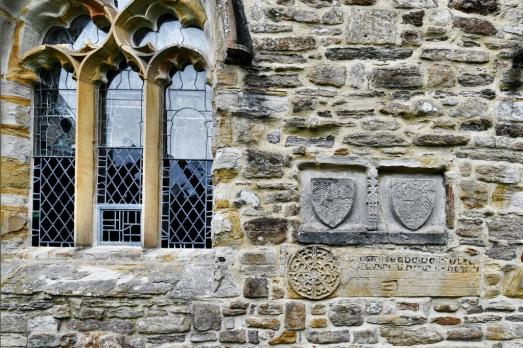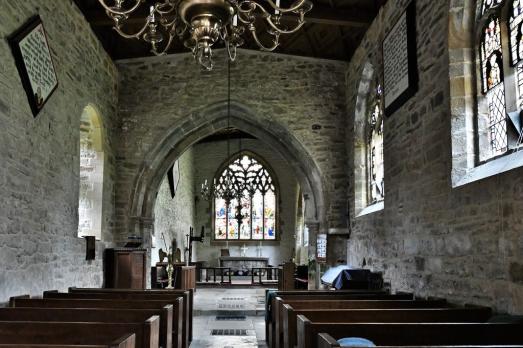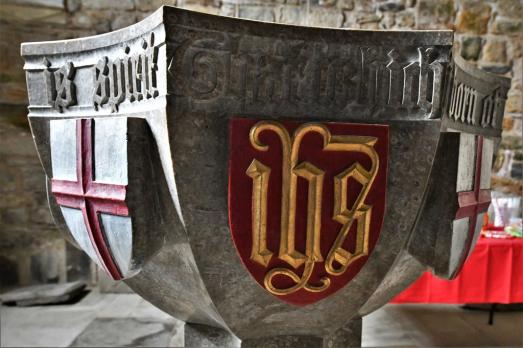The church was founded by Bishop Ecgred of Lindisfarne c840, and given, together with the hamlet of Wycliffe, to the monks of St Cuthbert. The current building was constructed 1150-1250. There is no tower or steeple, and the roof is almost flat, having been so for several centuries.
John Wyclif, described by Martin Luther as being 'the Morning Star of the Reformation' came from here, and his parents are buried near the altar. There is a small collection of Saxon carved stones, including cross fragments, a hogback, and door lintel, and another collection of medieval grave covers. The altar ('mensa') is a 14th century rarity, and was saved from destruction during the Reformation by being buried. There is a carved slab marking the grave of a 15th century rector, John Forster, which is amusing (particularly for children) in that the stonemason ran out of space so that the feet of the priest are one third the size of the hands!
The 14th century medieval stained glass, which is in the north and south windows, shows angel musicians playing a variety of instruments, including the violin, trumpet, recorder, triangle, and, unusually, Northumbrian pipes. The windows in the east and west windows, dating from the late 19th century, are again of fine quality, having been made by Clayton and Bell, stained glass makers to Queen Victoria. The ceiling was designed in 1963 by (Sir) William Whitfield, from nearby St Helen Auckland, who became Surveyor of the Fabric at St Paul's Cathedral. All the wooden furniture, including pews, pulpit, choir stalls, and communion rails was made by Robert Thompson, the 'Mouseman'. How many mice can you find?



